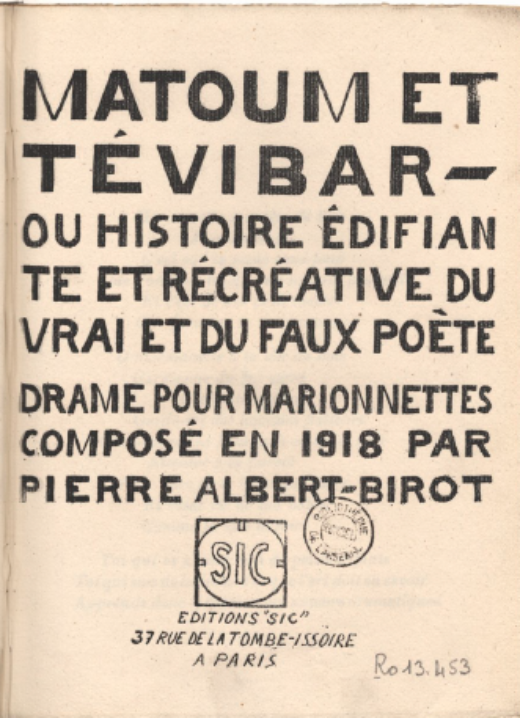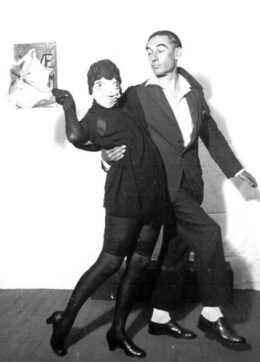
Printed
35 pages
Author(s)
Matoum et Tévibar
or the enlightening and recreational Story of the true and fake poet
The play is Pierre-Albert Birot’s first publication. After cutting ties with his first literary attempts and seeing his popularity grow with his review SIC (1916-1919), he became involved with the avant-garde movements: Cubists, Futurists, Dadaists. With Guillaume Apollinaire, he kept company with puppeteer Gaston Cony who ran the “Guignol de la Guerre” (“Guignol of War”) in the Parc des Buttes-Chaumont (Paris) and who offered him to put on his play. Still, it is the painter and sculptor Enrico Prampolini who ended up staging the play in Rome and who made it one of the most famous theatrical representations of Italian Futurism.
Even though the play does not include any specific instruction about the animation technique, several stage actions are characteristic of glove-puppets. While Matoum, the real poet, recites poems written by Guillaume Apollinaire, Philippe Soupault, Max Jacob, and Pierre Reverdy; Tévibar, “the fake poet”, does the same with older poems written and denied by Pierre Albert-Birot.
The battle of the real and the fake poets
The Roi and the Reine de Mars (King and Queen of Mars) wait for the arrival of a prodigious being, Matoum, but he is preceded by his doppelganger, the impostor Tévibar. While the poems told by Matoum bring light and colour to the planet, those delivered by Tévibar prompt melancholy and gloominess. During the sparring match between the two poets, Tévibar makes the Reine faint and the Roi die, but Matoum brings them back to life before flying to Earth to take part in the war.
First performance
Teatro dei Piccoli, Piazza SS. Apostoli. Set and puppets by Enrico Prampolini
Publications and translations
Pierre Albert-Birot, Matoum et Tévibar. Paris: Editions SIC, 1918.
Pierre Albert-Birot, Théâtre, vol. 1. Mortemart: Rougerie, 1977.
